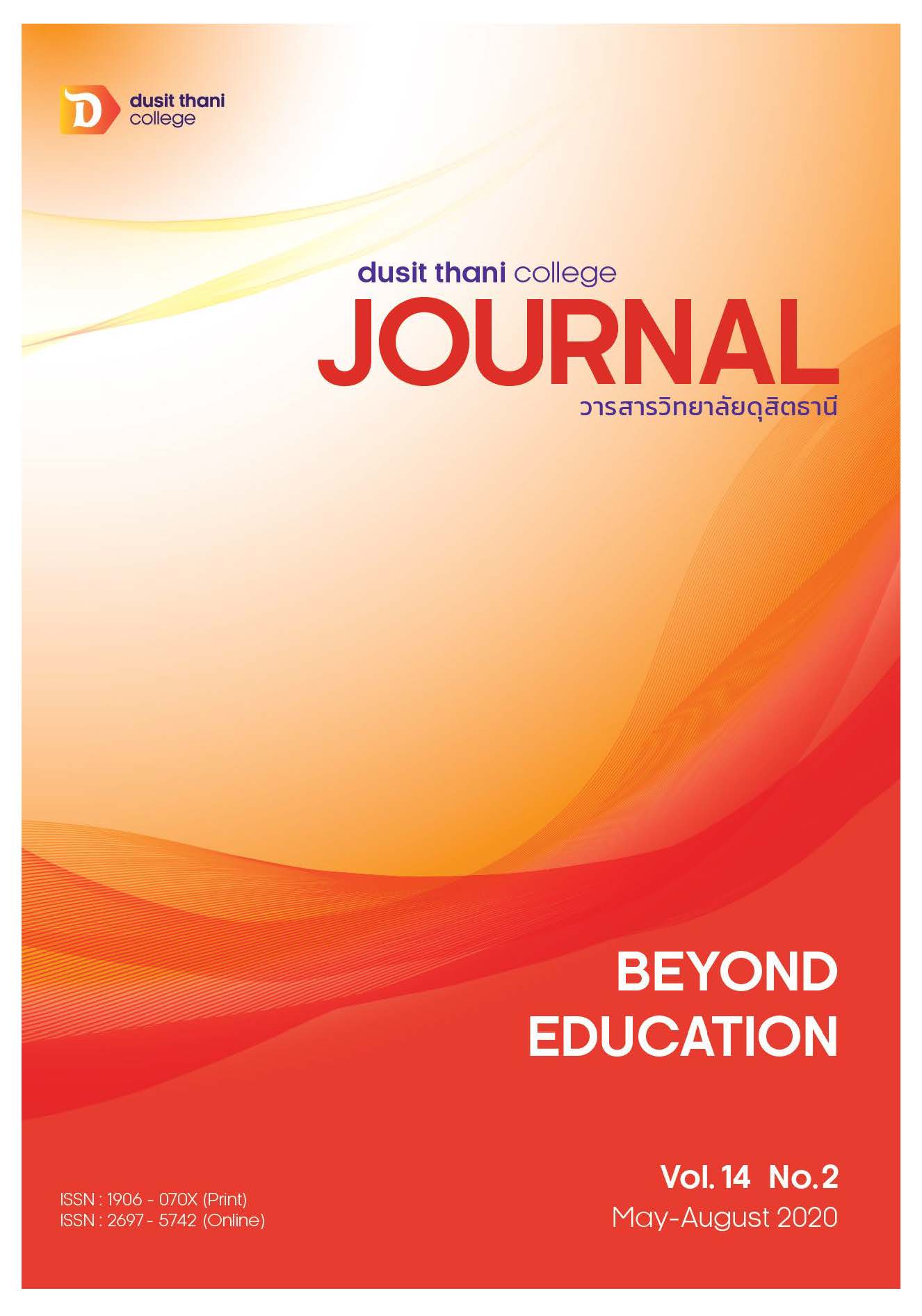A Strategic Approach of Exhibition in Bangkok to Promote and Generate the Potential of MICE Industry in Thailand
Main Article Content
Abstract
This research objectives were 1) to promote the exhibition business in Bangkok and strengthen the potential of exhibition industry in Thailand; 2) to generate a strategic approach of exhibition to enhance in MICE Business of Thailand. It was a qualitative research using in-depth interviews with key stakeholders in the exhibition industry. The results found that: 1) Bangkok has the potential in organizing exhibitions as it is the hub and capital of Thailand; 2) The possibility to propose a strategic approach of exhibition to enhance in MICE Business of Thailand, which leads to 4 strategies namely: 1) to develop and encourage Bangkok in organizing exhibitions to be in the top 3 of ASEAN, 2) to strengthen the capacity to complete exhibitions in Bangkok; 3) to develop the exhibition marketing in Bangkok; and 4) to build the sustainability of exhibitions in Bangkok. As a result, the exhibitions in Bangkok are effective and have been accepted from all participants in the global arena.
Article Details
Article Screening Policy
- All research and academic articles to be published must be considered and screened by three peer reviews in the relevant field / article.
- All articles, texts, illustrations and tables published in the journal are the personal opinions of the authors. Editors don't always have to agree. And no responsibility whatsoever is the sole responsibility of the author.
- The articles to be published must never be published. Where did you first publish? And not in the consideration of other journals If the audit found that there has been a duplicate publication It is the sole responsibility of the author.
- Any article that the reader sees as being plagiarized or impersonated without reference. Or mislead the work of the author Please let the journal editor know it will be your greatest blessing.
References
Chouysuk, Dussadee (2014). Khon Khan MICE Industry Development Plan towards Leading MICE City of Thailand. Khon Khan: Khon Khan University.
Jaroenwisan, Kaedsiri L.t. (2009). Appropriate Marketing Model of Venues for MICE Industry in Thailand. Chiang Mai: Mae Joe University.
Kittiwan, Pattranuch. (2016). The study and Analysis of Factors and Components of the Travels, Conventions and Exhibitions Industry (MICE): A Case Study MICE Industry in Thailand. Bangkok: Thai-Japan Technology Institute.
Kotler,P. Armstrong,G. (2016). Principles of Marketing. (16th ed.) Harlaw: Pearson Education Limited.
National Strategy 2018 (2018, 13 October). Government Gazette. Book No.135 Section 82 A. Page 1-71. (In Thai)
Naveekan, Somyot (2000). Management and Organization Behavior. Bangkok:
Brannakit Printing. (In Thai)
Porter, M. E. (1980). Competitive Strategy: Techniques for Analyzing Industries and Competitors. New York: Free Press.
Rattanasomchok, Sopita (2015). Influences on Customer Satisfaction with the Bangkok Sky Train in Thailand. Bangkok: Thammasat University.
Roonguangpon, Vittavat (2012). Principles of Marketing. Bangkok: Mistercopy Printing. (In Thai)
Tangjitwattana, Boonlert (2014). MICE Business. Bangkok. Fernkhaluang Printing. (In Thai)
Thailand Convention and Exhibition Bureau (2016). 20 Years of Key Action Plan.
Bangkok. Thailand Convention and Exhibition Bureau. (In Thai)
Thailand Convention and Exhibition Bureau (2016). MICE Statistic 2015. Bangkok. Thailand Convention and Exhibition Bureau.
Thailand Convention and Exhibition Bureau (2017). Introduction to MICE Industry.
Bangkok. Thailand Convention and Exhibition Bureau.
Thailand Convention and Exhibition Bureau (2017). MICE Statistic 2016. Bangkok.
Thailand Convention and Exhibition Bureau.
Thailand Convention and Exhibition Bureau (2018). MICE Statistic 2017. Bangkok.
Thailand Convention and Exhibition Bureau.
Thailand Convention and Exhibition Bureau (2018). About TCEB. Bangkok.
Thailand Convention and Exhibition Bureau.
Thailand Exhibition Association (2018). About TEA. Bangkok. Thailand Exhibition Association.
Thongbai, Gingthong (2003). Business Strategy and policy. Nonthaburi.
Sukhothai Thammathirat University Printing. (In Thai)
United Nations. (January 21, 2561). Sustainable Development Goals. Retrieved January 21, 2561, from https://sustainabledevelopment.un.org/sdgs.
Xin, J., Weber, K. (2013). Developing and testing a model of exhibition brand preference:
The Exhibitors’ perspective. Tourism Management. Elsevier.


